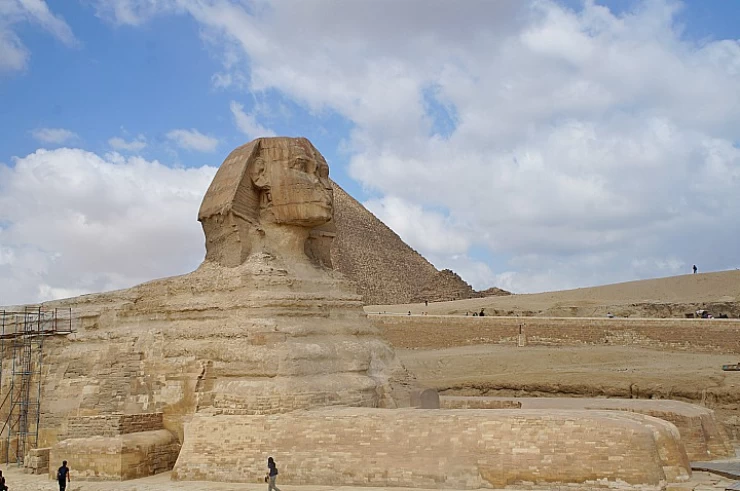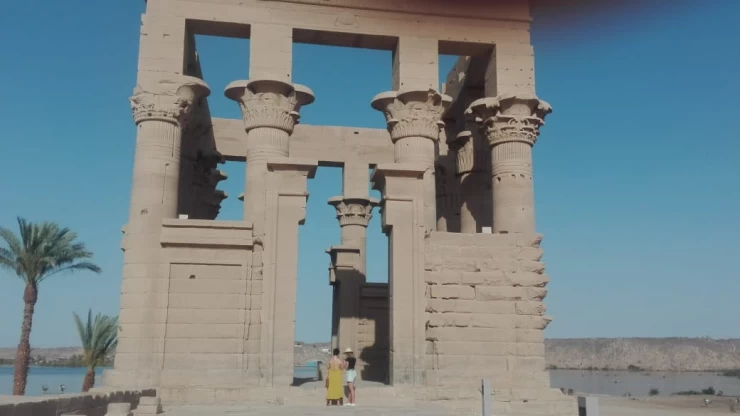In the early morning you will enjoy your first delicious breakfast at the hotel, and and then one of the professional tour guides from the Cairo Top Tours team will come to meet you to start one of the best cultural and historical tours in the world because you will visit the most important archaeological landmarks in the world.
You will start the day by visiting one of the most important and largest archaeological museums in the world, the Egyptian Museum in Tahrir, which includes a huge collection of the rarest and most dazzling artifacts. The tour guide will tell you the story of each artifact and pharaonic statue in the museum in detail so that you become familiar with the most important events in the lives of the ancient pharaohs. The Egyptian Museum in Cairo is the oldest archaeological museum in the Middle East, containing more than 170,000 valuable artifacts, and it also contains the largest collection of diverse ancient Egyptian artifacts in the world. The Egyptian Museum development project in Tahrir is currently being implemented by the Egyptian Scientific Committee and several museum curators, with a grant from the European Union in cooperation with five European museums: the Louvre in Paris, the Egyptian Museum in Turin, the National Museum of Antiquities in Leiden, the Egyptian Museum in Berlin, and the British Museum in London.
Then we will visit the greatest archaeological site in the entire world. The ancient Egyptian pyramids are royal tombs built over 2700 years, starting from the Old Kingdom until the late Ptolemaic era. The construction of the pyramids began in the Third Dynasty and was completed in the Sixth Dynasty. The pyramids were not isolated structures at that timebut were part of a huge architectural complex. The ancient Egyptians believed that the kings were chosen by the sacred gods to be intermediaries between them and the people, so their bodies must be preserved even after death so that they can return to life again.
You will see the Sphinx, which dates back to the Fourth Dynasty, specifically during the reign of King Khafre. The Sphinx is believed to have been painted in bright blue and yellow,, but the colors have faded over time. The statue was covered in desert sand,, but in 1400 BC the sand was removed from around it during the reign of Pharaoh Thutmose IV. You will see the Valley Temple of King Khafre, which is one of the most famous temples with distinctive Pharaonic designs. It is known for its wonderful and breathtaking design, as it consists of huge blocks of limestone covered with granite, while the floors are covered with dazzling marble, and its wide courtyard includes homogeneous columns of granite. The niches carved in the walls of the courtyard were arranged symmetrically and wonderfully along the walls to contain statues of the king, some of which are currently on display in the Egyptian Museum in Tahrir.
You will have the opportunity to visit the most famous holy churches where the Holy Family stayed during their escape to Egypt to protect the child Jesus from being killed by King Herod. You will visit the Hanging Church; the reason for its name is due to its construction on two high towers of the ancient Roman fort known as "Babylon Fortress," which was built during the reign of Emperor Trajan in the second century AD.
You will also visit the Church of Abu Serga, since the establishment of this church, the cave located underneath it has been the focus of the greatest attention because it is the place where the Virgin Mary, Christ, and Joseph the Carpenter stayed. This church is also distinguished by the presence of an ancient holy water well from which Christ drank, and on its opening, there is currently a glass door that allows visitors to look through it into the well.
You will visit the Ben Ezra Synagogue. The synagogue was originally a church called the "Church of the Candlemas" and was sold by the Orthodox Church to the Jewish community when it went through financial distress as a result of the large tax increases imposed on it at the time. The synagogue was named after "Ezra the Scribe," one of the most prominent Jewish rabbis at that time. It is sometimes called the Philistine Synagogue or the Levantine Synagogue. Modern researchers and Jews know it as the Geniza Synagogue after the famous Geniza documents found there in 1890. At the end of the day, you can visit one of the most famous and largest markets in the Middle East, Khan El Khalili Bazaar, so you can buy all the souvenirs you want and see the original Egyptian handicrafts. We will transfer you back to your hotel.
Meals: Breakfast, Lunch, Dinner



















